Animals: General Books
Further resources, if available, can be found in our full bibliography.
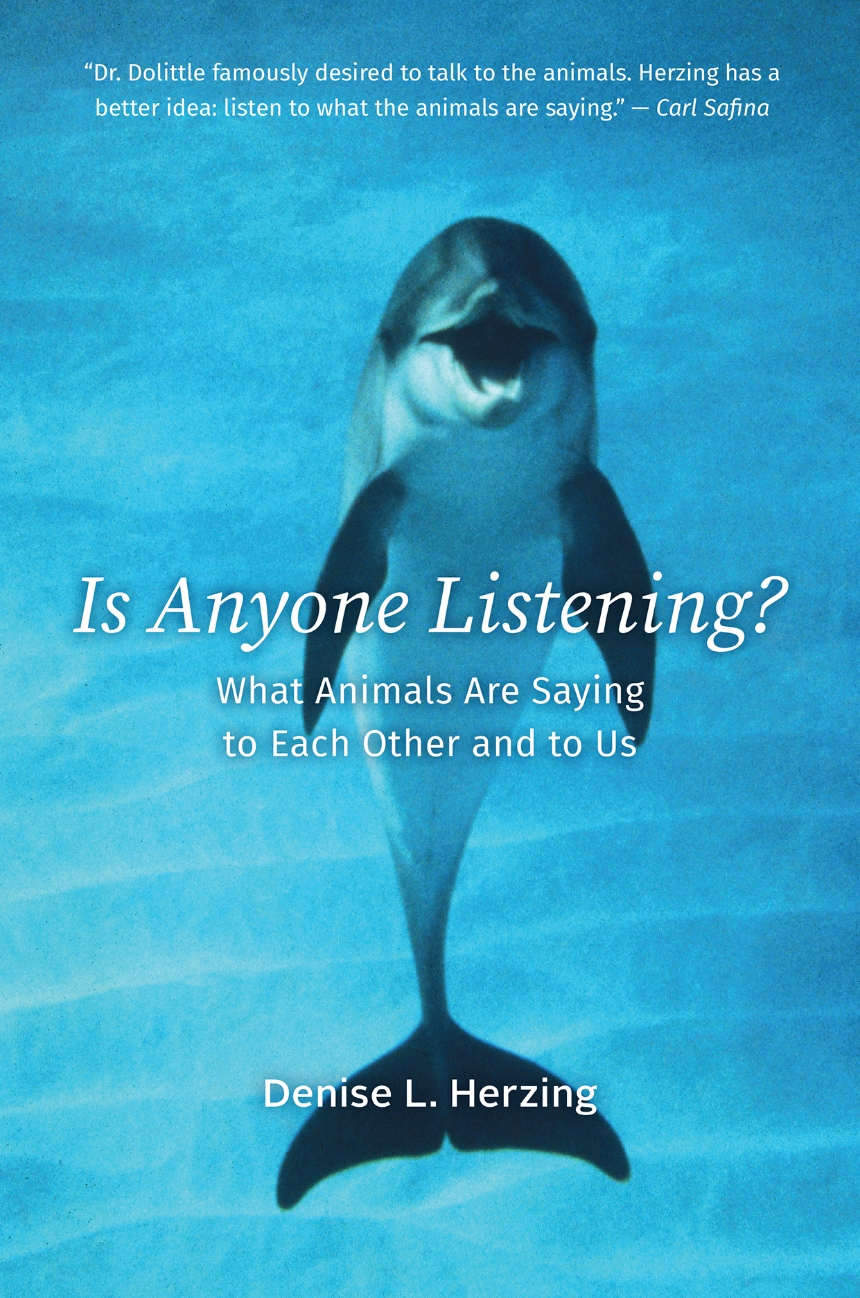
Is Anyone Listening?: What Animals Are Saying to Each Other and to Us
Denise L. Herzing
University of Chicago Press
2024
From a leading researcher on dolphin communication, a deep dive into the many ways animal species communicate with their kin, their neighboring species, and humans. Is Anyone Listening? connects research on dolphin communication to findings from Jane Goodall on chimpanzees, Dian Fossey on mountain gorillas, Cynthia Moss on African elephants, and others driving today’s exploration of possible animal languages. Although humans have long attempted to crack animal communication codes, only now are advanced machine-learning tools available to help them. As Herzing reveals, researchers are finding fascinating hints of language in non-human species, including linguistic structures, vowel equivalents, and complex repeated sequences. By looking at the many ways animals use and manipulate signals, readers see that humans have only just begun to appreciate the diversity of animal intelligence and the complicated and subtle aspects of animal communication. Considering dolphins and other non-human animals as colleagues instead of research subjects, Herzing asks readers to meet animals as both speakers and listeners, as mutually curious beings, and to listen to what they are saying.
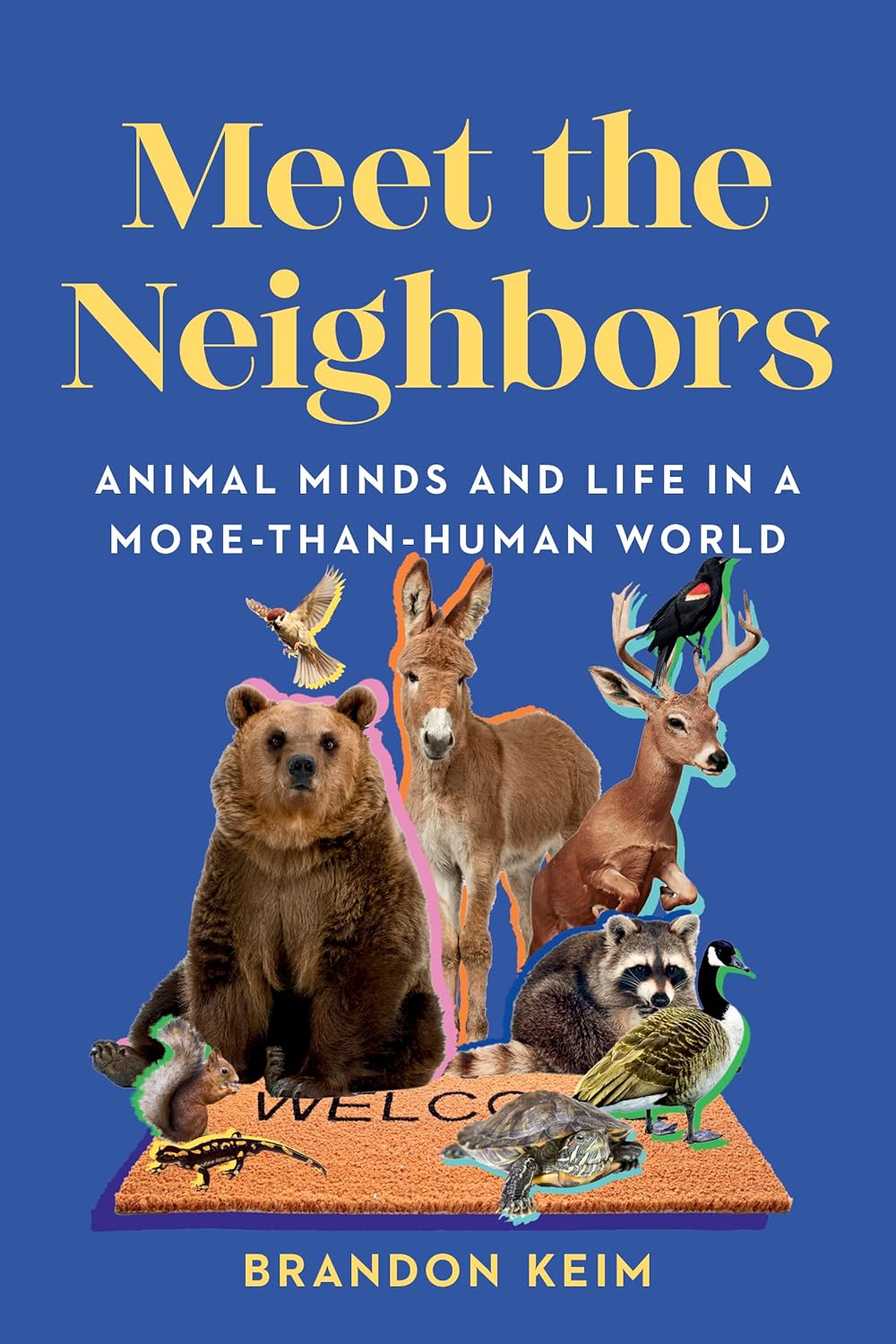
Meet the Neighbors by Brandon Keim explores the evolving science of animal cognition, revealing that animals–from honeybees to rats and bats–possess complex intelligence and social lives. Keim examines how this new understanding challenges how humans consider ethical relationships with wildlife and prompts readers to reconsider animals as members of a shared community. Through compelling stories and research, Keim asks whether humans should extend moral consideration to animals based on their emotional and social lives. This book offers valuable insights into animal intelligence, ethics, and conservation, making it a key resource for scholars and anyone interested in the evolving relationship between humans and the natural world.
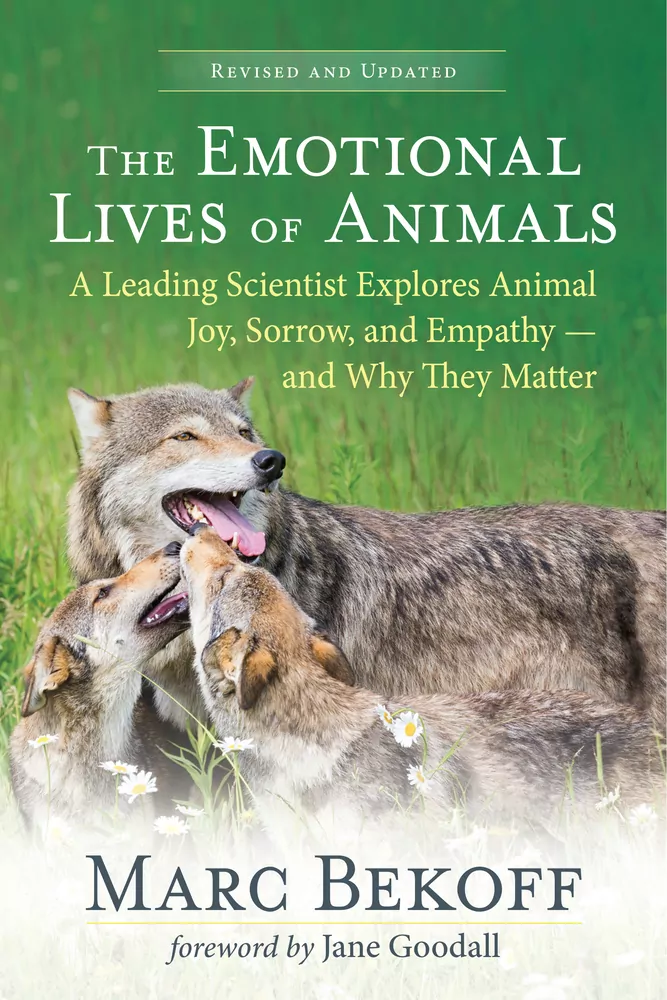
The Emotional Lives of Animals: A Leading Scientist Explores Animal Joy, Sorrow, and Empathy – and Why They Matter
Marc Bekoff
New World Library [2007]
2024 (Revised)
A seminal exploration of animal emotion, sentience, and cognition, revised and expanded to incorporate a surge of new science. When scientist Marc Bekoff penned the first edition of this book in 2007, he predicted that over time human understanding of animal cognition and emotion would grow “richer, more accurate, and possibly different.” Since then, not only has the field seen an explosion of new and startling research, but the popular interest in the subject has grown as well, spawning countless podcasts, articles, and books. Bekoff skillfully blends extraordinary stories of animal joy, empathy, grief, embarrassment, anger, and love with the latest scientific research confirming the existence of emotions that common sense and experience have long implied. Filled with light humor and compassion, The Emotional Lives of Animals is a clarion call for reassessing both how humans view and how humans treat other animals.
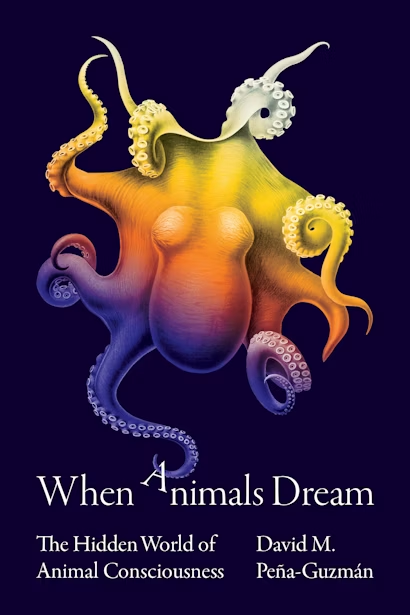
When Animals Dream: The Hidden World of Animal Consciousness
David M. Peña-Guzmán
Princeton University Press
2022
When Animals Dream brings together behavioral and neuroscientific research on animal sleep with philosophical theories of dreaming. It shows that dreams provide an invaluable window into the cognitive and emotional lives of non-human animals, giving readers access to a seemingly inaccessible realm of animal experience. David Peña-Guzmán uncovers evidence of animal dreaming throughout the scientific literature, suggesting that many animals run “reality simulations” while asleep, with a dream-ego moving through a dynamic and coherent dreamscape. He builds a convincing case for animals as conscious beings and examines the thorny scientific, philosophical, and ethical questions it raises. Once humans accept that animals dream, they incur a host of moral obligations and have no choice but to rethink their views about who animals are and the interior lives they lead.
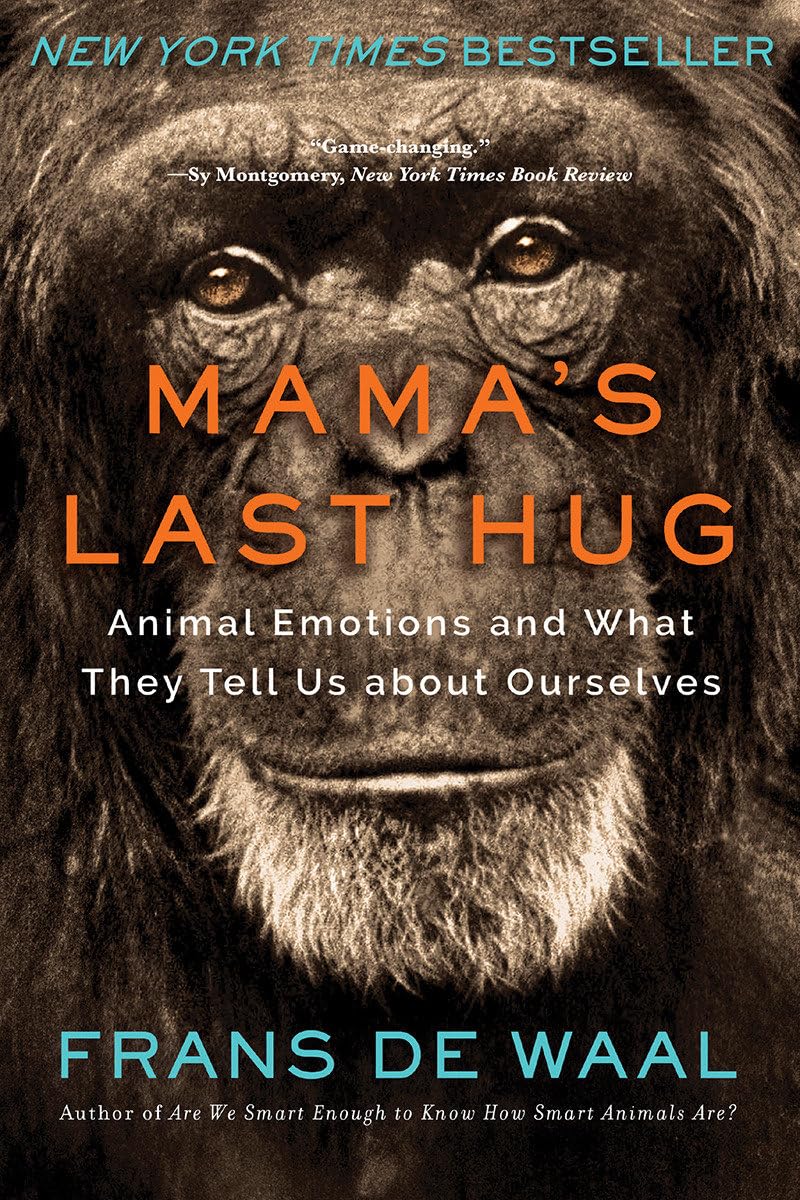
Mama's Last Hug: Animal Emotions and What They Tell Us About Ourselves
Frans de Waal
W.W. Norton & Company
2019
Mama’s Last Hug is a fascinating exploration of the rich emotional lives of animals, beginning with Mama, a chimpanzee matriarch who formed a deep bond with biologist Jan van Hooff. Her story and others like it–from dogs “adopting” the injuries of their companions, to rats helping fellow rats in distress, to elephants revisiting the bones of their loved ones–show that humans are not the only species with the capacity for love, hate, fear, shame, guilt, joy, disgust, and empathy. Frans de Waal opens readers’ hearts and minds to the many ways in which humans and other animals are connected.
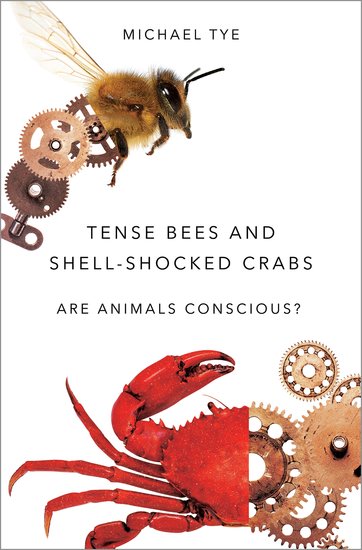
In Tense Bees and Shell-Shocked Crabs, Michael Tye offers answers to some of today’s most pressing questions about non-human consciousness. Without endorsing any specific theory on the nature of consciousness, Tye tackles issues such as the animal experience of pain and fear, and the role of brain anatomy in determining consciousness. He concludes with a discussion of how, if readers consider animals conscious, this might impact their ethical obligations to them. From insects to crabs, fish to birds, Tense Bees and Shell-Shocked Crabs offers an insightful exploration of the ways in which animals relate to the world.
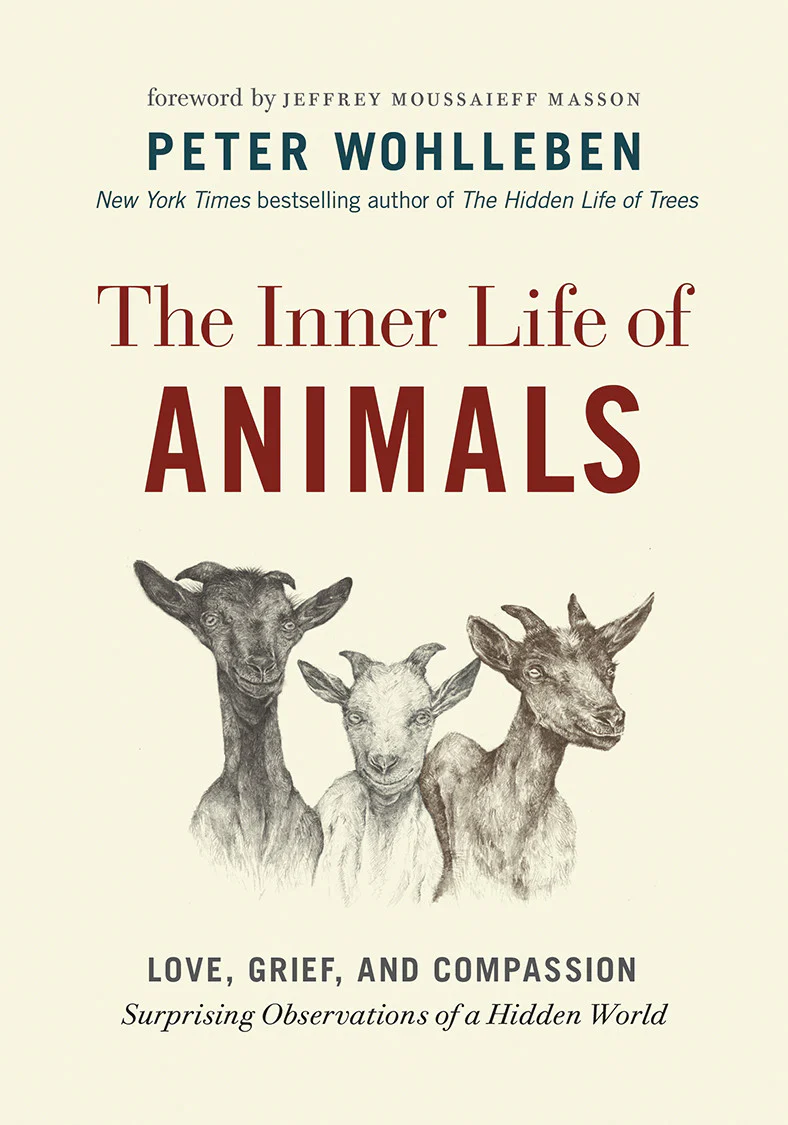
The Inner Life of Animals: Love, Grief, and Compassion―Surprising Observations of a Hidden World
Peter Wohlleben
Greystone Books
2017
Through vivid stories of devoted pigs, two-timing magpies, and scheming roosters, The Inner Life of Animals weaves the latest scientific research into how animals interact with the world with Peter Wohlleben’s personal experiences in forests and fields. Readers learn that horses feel shame, deer grieve, and goats discipline their kids. Ravens call their friends by name, rats regret bad choices, and butterflies choose the very best places for their children to grow up. In this captivating book, Peter Wohlleben follows the successful The Hidden Life of Trees with insightful stories into the emotions, feelings, and intelligence of animals. Readers will be amazed at not only the differences but the remarkable similarities between human and non-human animals.
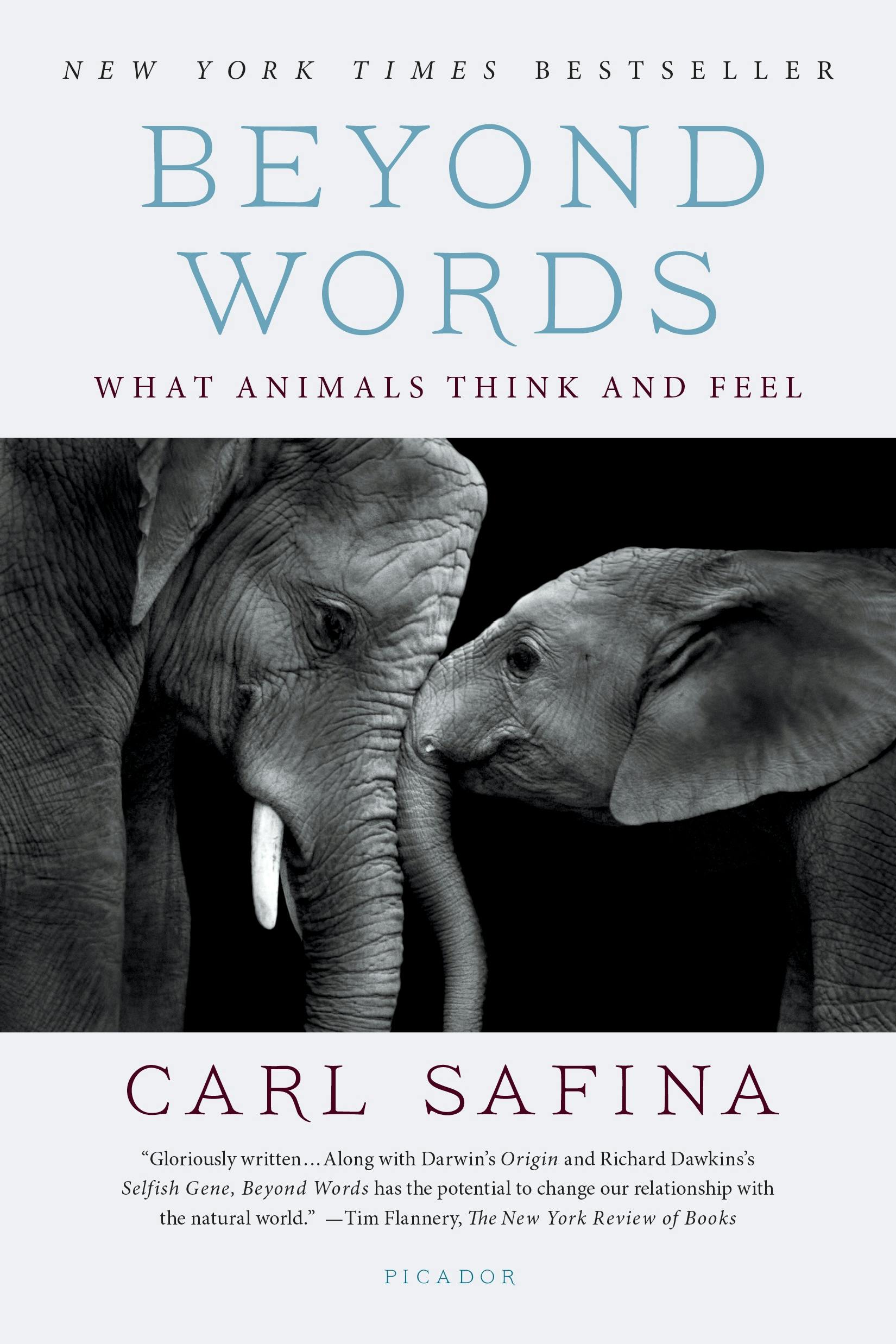
Weaving decades of field observations with exciting new discoveries about the brain, Carl Safina’s book offers an intimate view of animal behavior to challenge the fixed boundary between humans and non-human animals. In Beyond Words, readers travel to Amboseli National Park in the threatened landscape of Kenya and witness struggling elephant families work out how to survive poaching and drought, then to Yellowstone National Park to observe wolves sort out the aftermath of one pack’s personal tragedy, and finally plunge into the astonishingly peaceful society of killer whales living in the crystalline waters of the Pacific Northwest. Beyond Words brings forth powerful and illuminating insight into the unique personalities of animals through extraordinary stories of animal joy, grief, jealousy, anger, and love. The similarity between human and non-human consciousness, self-awareness, and empathy calls readers to re-evaluate how they interact with animals.
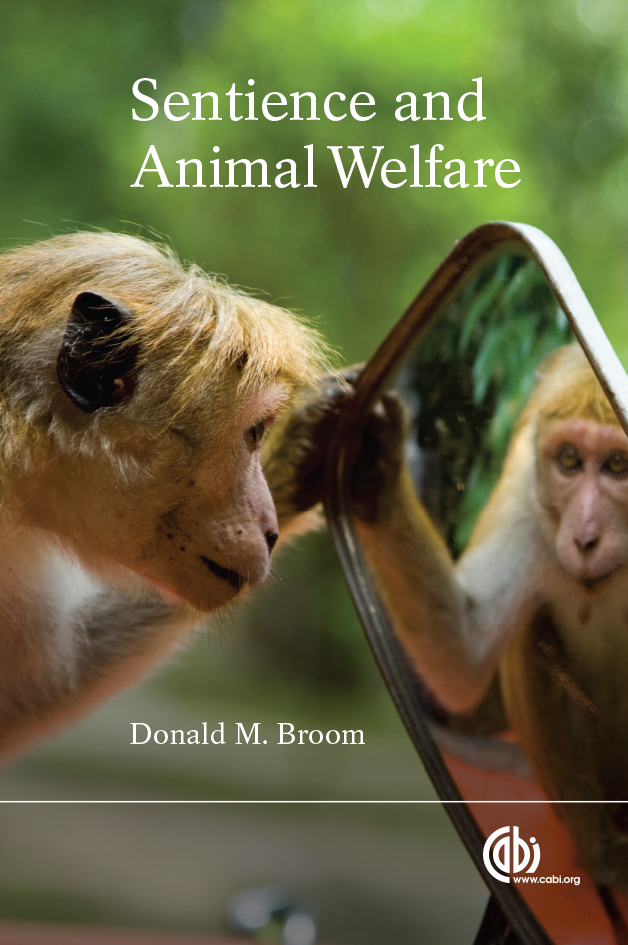
Beginning with an introduction to sentience, the book investigates why humans are so interested in sentience, when, as a species, humans became sentient and how it has changed over time. The book defines aspects of sentience such as consciousness, memory and emotions, and discusses brain complexity in detail. Looking at sentience from a developmental perspective, it analyzes when in an individual’s growth sentience can be said to appear and uses evidence from a range of studies investigating embryos, fetuses and young animals to form an enlightening overview of the subject. With a full chapter covering ethical decisions such as animal protection and experimentation, this book is not only an invaluable resource for researchers and students of animal welfare and biology, but also an informative read for veterinarians and the general public.
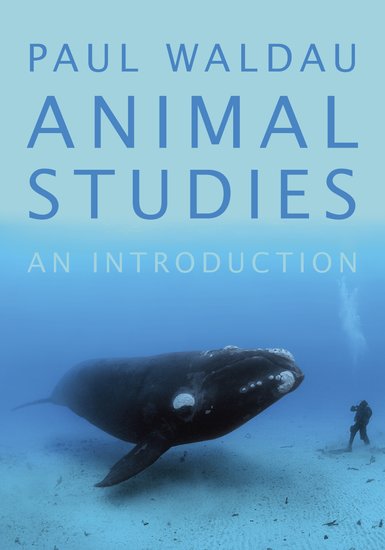
Animal studies is a growing interdisciplinary field that incorporates scholarship from public policy, sociology, religion, philosophy, and many other areas. In essence, it seeks to understand how humans study and conceive of other-than-human animals, and how these conceptions have changed over time, across cultures, and across different ways of thinking. This interdisciplinary introduction to the field foregrounds the realities of non-human animals, as well as the imaginative and ethical faculties that humans must engage to consider their intersection with living beings of other species. It also demonstrates that the breadth and depth of thinking and humility needed to grasp the human-non-human intersection has the potential to expand the dualism that currently divides the sciences and humanities. As the first holistic survey of the field, Animal Studies is essential reading for any student of human-animal relationships and for all people who care about the role non-human animals play in society.
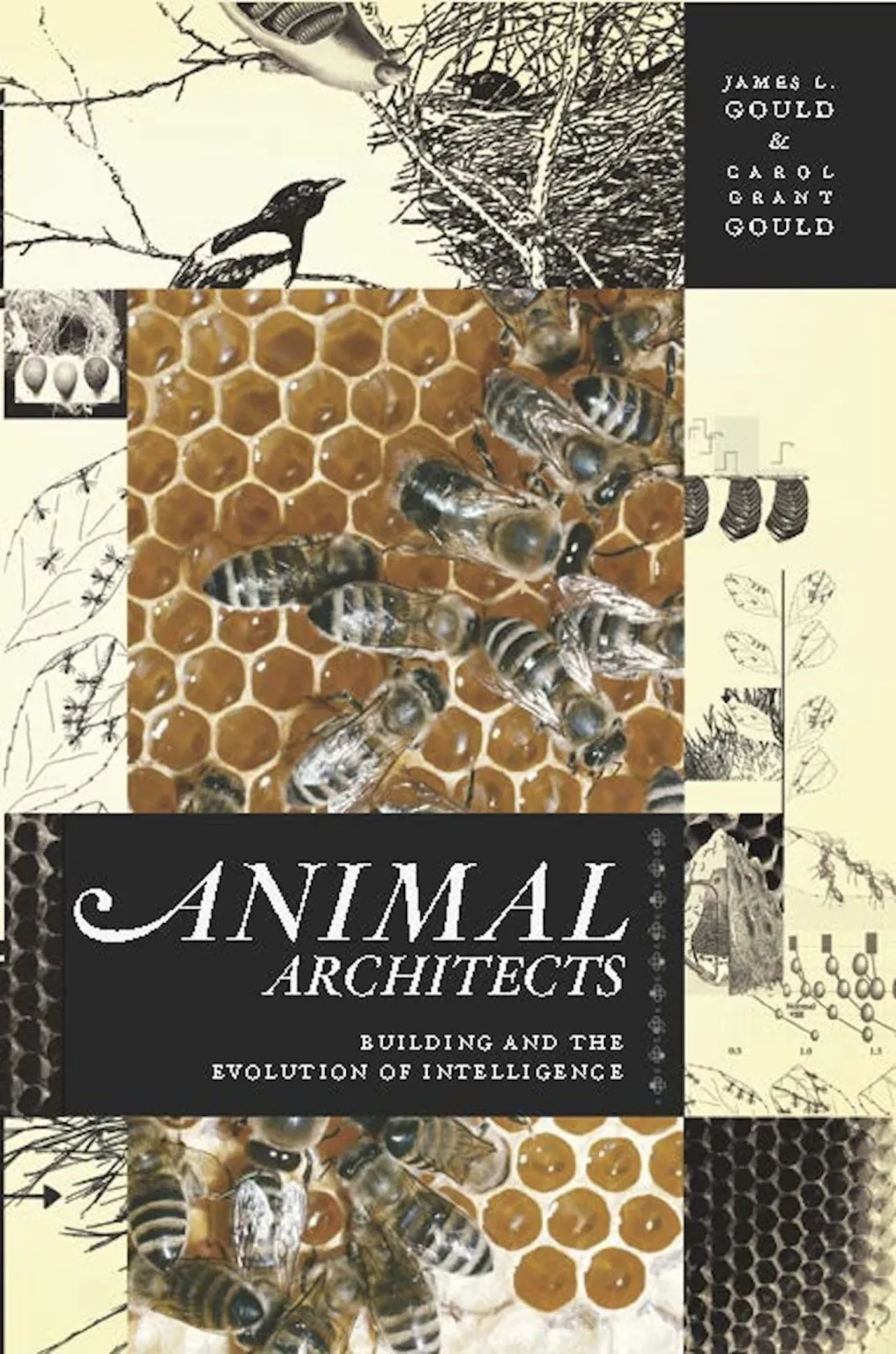
Animal Architects: Building and the Evolution of Intelligence
James L. Gould, Carol Grant Gould
Basic Books
2012
The structures animals build provide a superb window on the workings of the animal mind. Animal Architects examines animal architecture across a range of species, from those whose blueprints are largely innate (such as spiders and their webs) to those whose challenging structures seem to require intellectual insight, planning, and even aesthetics (such as bowerbirds’ nests, or beavers’ dams). Beginning with instinct and the simple homes of solitary insects, James and Carol Gould move on to conditioning; the “cognitive map” and how it evolved; and the role of planning and insight. Finally, they reflect on what animal building reveals about the nature of human intelligence–showing why humans, unlike many animals, need to build castles in the air.
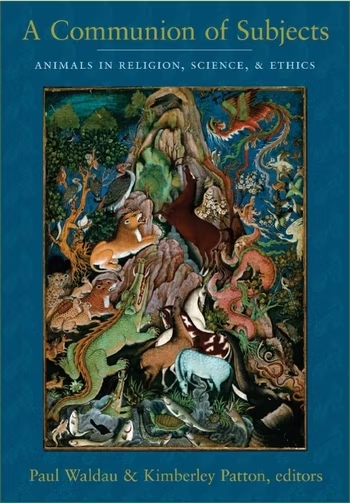
A Communion of Subjects: Animals in Religion, Science, and Ethics
Paul Waldau, Kimberley Patton
Columbia University Press
2006
A Communion of Subjects is the first comparative and interdisciplinary study of the conceptualization of animals in world religions. Scholars from a wide range of disciplines consider how major religious traditions have incorporated animals into their belief systems, myths, rituals, and art. Their findings offer insights into humans’ relationships with animals and a deeper understanding of the social and ecological web in which they all live. Contributors explore issues such as animal consciousness, suffering, sacrifice, and stewardship in innovative methodological ways. They also address contemporary challenges relating to law, biotechnology, social justice, and the environment. They reveal how humans either intentionally or inadvertently marginalize “others,” whether human or otherwise, reflecting on the ways in which they assign value to living beings.
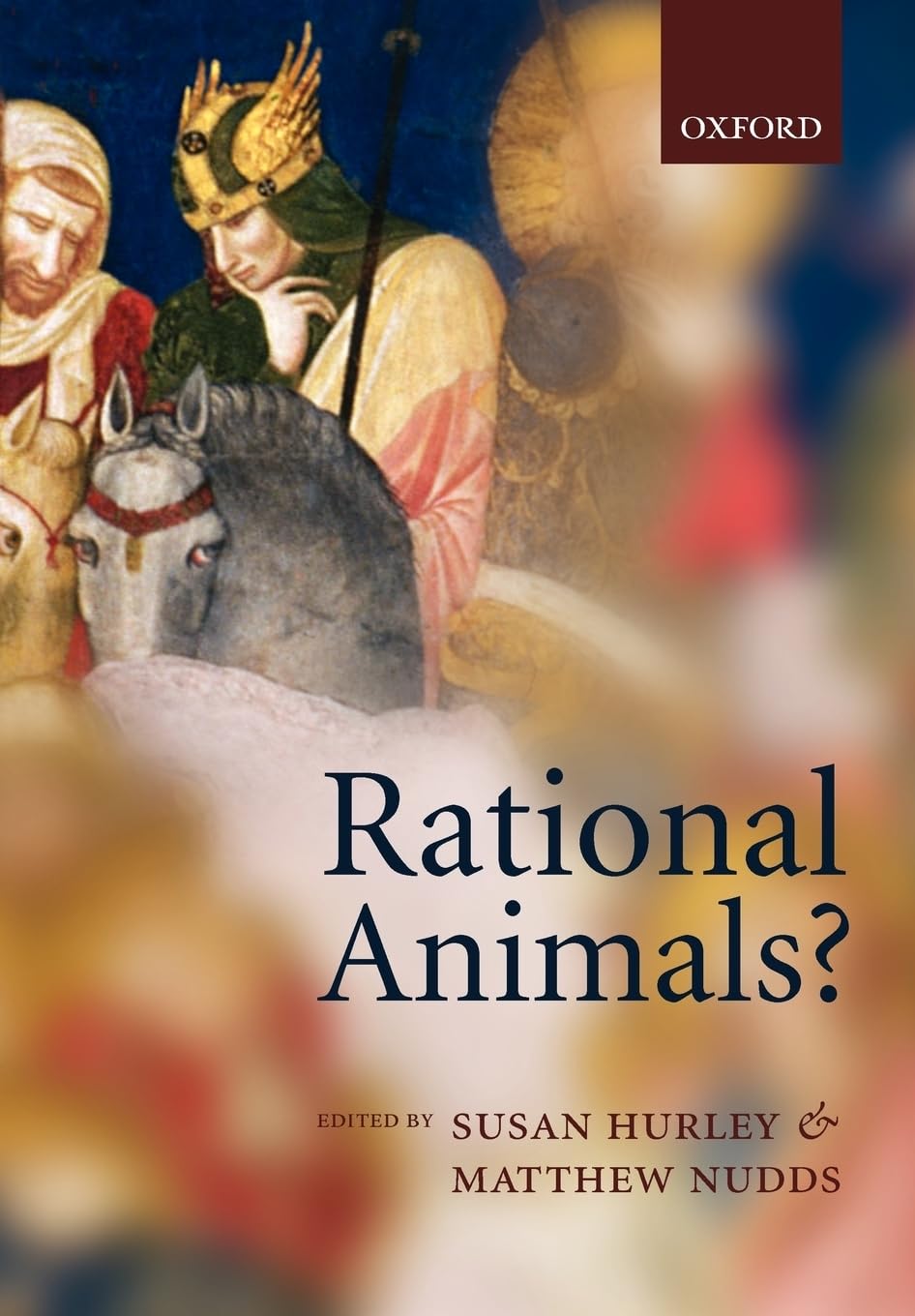
To what extent can animal behavior be described as rational? What does it even mean to describe behavior as rational? This book focuses on one of the major debates in science today: how closely does mental processing in animals resemble mental processing in humans? It addresses the question of whether and to what extent non-human animals are rational, that is, whether any animal behavior can be regarded as the result of a rational thought process. With a distinguished line-up of leading thinkers from philosophy and psychology, the book presents the first multidisciplinary examination of this topic.
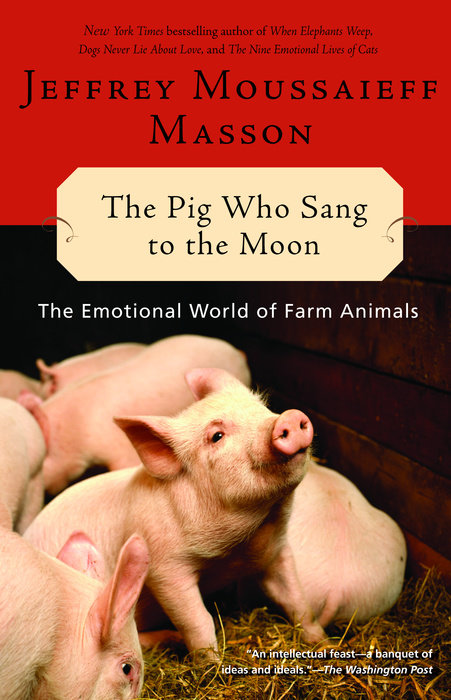
The Pig Who Sang to the Moon: The Emotional World of Farm Animals
Jeffrey Moussaieff Masson
Ballantine Books
2004
Jeffrey Moussaieff Masson’s first book, When Elephants Weep, explored emotions in the animal kingdom, particularly from animals in the wild. Now, he focuses exclusively on the contained world of the farm animal, revealing evidence that barnyard creatures have feelings too, even consciousness. Weaving history, literature, anecdotes, scientific studies, and Masson’s own vivid experiences observing pigs, cows, sheep, goats, and chickens over the course of five years, this book gives voice, meaning, and dignity to these animals that are bred to be milked, shorn, butchered, and eaten. Can humans ever know what makes another animal happy? Many animal behaviorists say no. But Jeffrey Masson has a different view: An animal is happy if it can live according to its own nature. From field and barn, to pen and coop, Masson bears witness to the emotions and intelligence of these remarkable farm animals, each unique with distinct qualities.
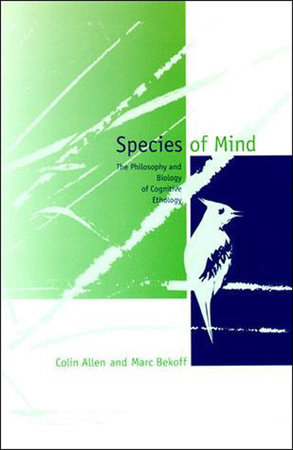
Species of Mind: The Philosophy and Biology of Cognitive Ethology
Colin Allen, Marc Bekoff
MIT Press
1997
Philosopher Colin Allen and cognitive ethologist Marc Bekoff approach their work from a perspective that considers arguments about evolutionary continuity to be as applicable to the study of animal minds and brains as they are to comparative studies of kidneys, stomachs, and hearts. This interdisciplinary approach reveals flaws in common objections to the view that animals have minds. The heart of the book is this reciprocal relationship between philosophical theories of mind and empirical studies of animal cognition. Allen and Bekoff make specific suggestions about how to use philosophical theories of intentionality as starting points for empirical investigation of animal minds, and they stress the importance of studying animals other than non-human primates.
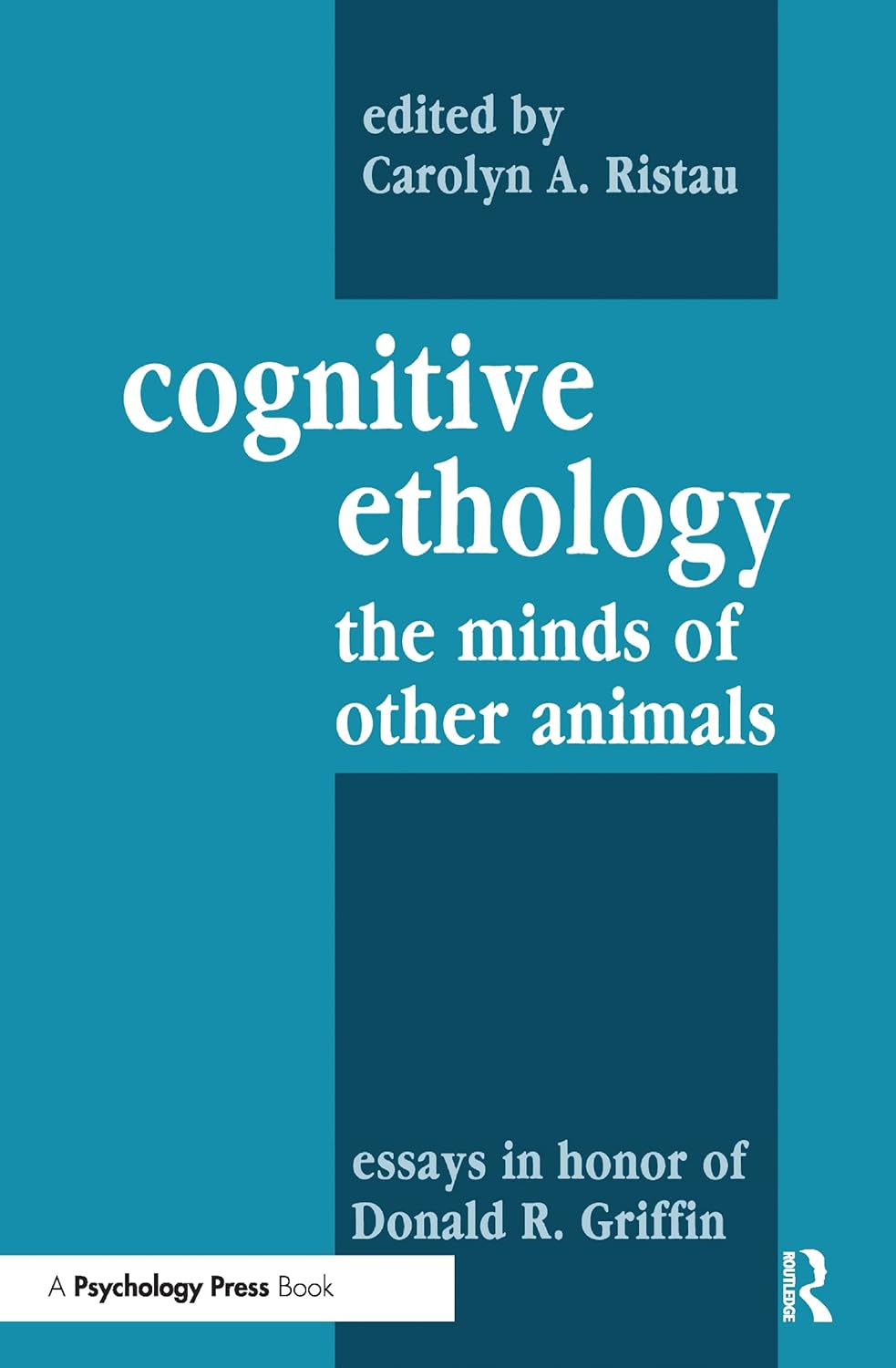
Cognitive Ethology: The Minds of Other Animals: Essays in Honor of Donald R. Griffin
Carolyn A. Ristau
Psychology Press
1991
This collection of essays recognizes and honors the work of Donald R. Griffin, the creator of cognitive ethology. Stimulated by his work, this volume presents ideas and experiments in the field of cognitive ethology–the exploration of the mental experiences of animals as they behave in their natural environment during the course of their normal lives. Cognitive Ethology discusses the possibility that animals may have abilities to experience, communicate, reason, and plan beyond those usually ascribed to them in a “black box” or “stimulus-response” interpretation of their behavior.
Photo Credit: Alexas_Fotos/Pixabay